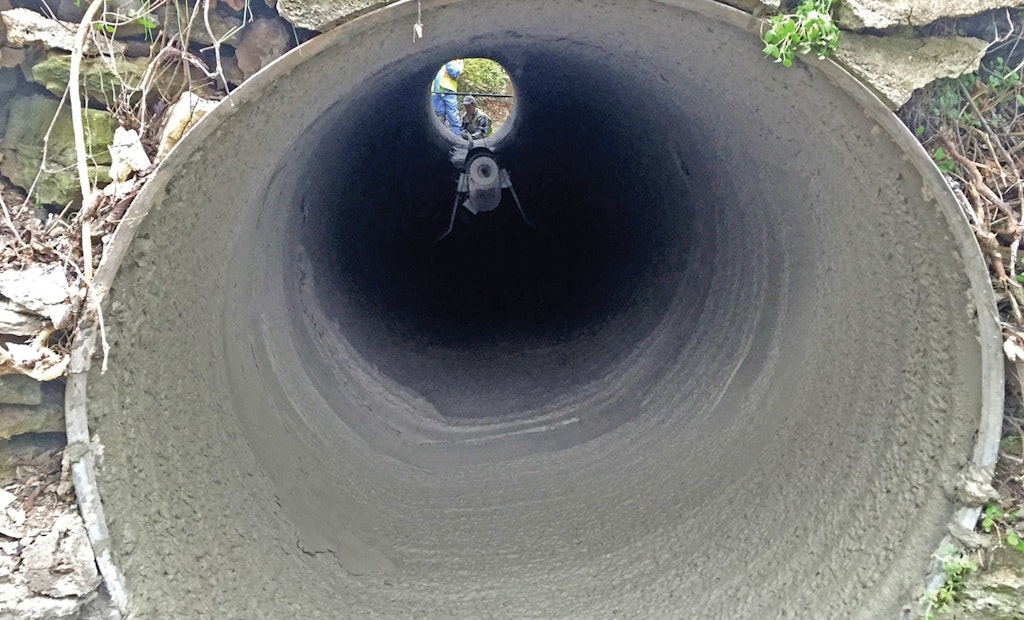
A Nashville-based C.K. Masonry Co. technician sends an inspection camera through a culvert that the company lined with Storm Seal, a specially formulated, fiber-reinforced cementitious mixture.
Replacing rusted-out culverts can be quite a project. To start, there’s the excavation. Then demolishing and rebuilding any headwalls. Major traffic disruptions. And possibly replacing nearby sidewalks and pavement damaged by the excavation work.
But thanks to a product called...





